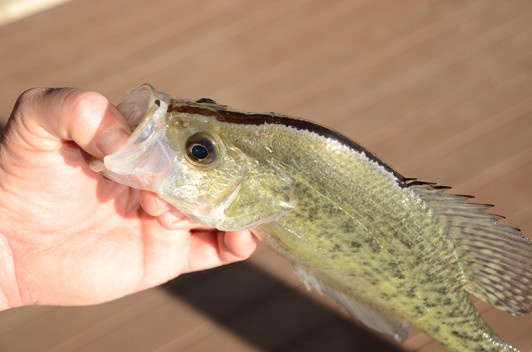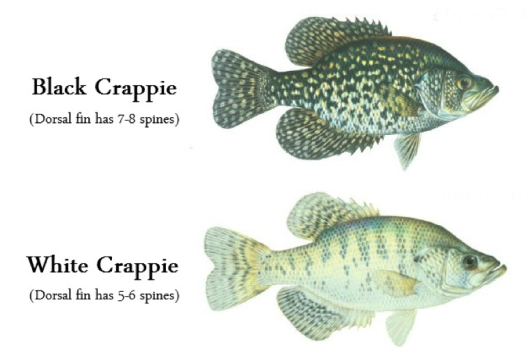Crappie is the second most popular freshwater game fish in the United States behind largemouth bass. (Not to mention that they taste outstanding when dropped in batter, tossed in cornmeal and lightly fried.) While there is no question that people like to stock their pond with these delicious fish, there are important variables needed to be taken into consideration when you are looking to stock your pond with crappie.
Crappie can be a difficult fish to manage, especially in small ponds. If you are trying to maintain a small pond with multiple sport fish species, such as largemouth bass and crappie, you may find that you have a hard time growing anything of a substantial size.
Crappie spawns at cooler temperatures than other sport fish, giving them a head start on their growth. This may sound like a good thing, however because they spawn and hatch earlier, and in higher number than bass, they eat a majority of the forage fish, and even the young bass offspring. Many times when you have a small pond stocked with crappie you will find many stunted and undersized fish due to lack of forage. It is up to you to determine what your goals are for your pond.
To maintain a healthy population of crappie you must be able to apply adequate fishing pressure, and be willing to harvest enough fish from your pond to keep the numbers in check. Sometimes even fish that are too small to produce a nice filet.
Types of Crappie
The two most common types of crappie are the black crappie and the white crappie. You may notice a difference in color, but that will not always be the best way to recognize the difference between the two, as the white crappie can appear much darker during spawning season. The best way to differentiate the species is to look at the number of spines on the dorsal fins.

White crappie has an extremely high reproductive capacity and can over populate in a body of water that is not large enough to support their numbers. While there is nothing wrong with the white crappie, they are not used in pond stocking or raised commercially.
Black crappie are used exclusively for stocking in smaller lakes or ponds, above two acres, as they are less prolific than the white crappie, but still have great reproductive potential. That being said they too need to be harvested somewhat heavily to keep from overpopulating. Harvesting gives the other crappie room to grow into nice slabs for the dinner table.
If you don’t have at least two acres to work with, there is another option for stocking crappie in a small pond. The hybrid crappie is a mix of the black and white crappie that still have the ability to reproduce, but at a much lower rate. The offspring of the hybrids show inferior growth, and when stocked with bass and bluegill, are often eaten as forage. Few hybrid offspring will survive to adulthood, therefore helping prevent overpopulation. The hybrid makes a great fish to stock in smaller ponds as it will allow pond owners to maintain control of their population rather than constantly needing to harvest. Fishing should be a blast but it can be less rewarding if you do not have the correct fish suited to your pond.
If you want to add crappie to your small pond to provide excellent table fair, Pond King can help assess your situation and determine the best stocking plan for your needs.
Happy Fishing!
Brad Metzler, President



